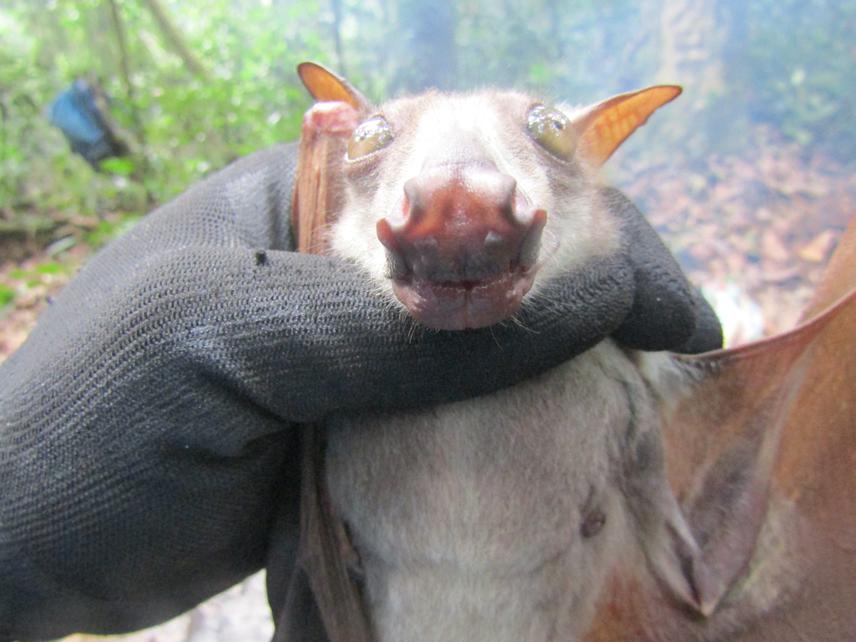Patrick Jules Atagana
Other projects
25 Nov 2019
Bat Community Response to Forest Loss and Habitat Conversion in Southern Cameroon II
The main aim of this project is to evaluate the effects of habitat conversion on a bat assemblage in the Dja reserve in order to predict future trends in the distribution and abundance of bat species in the face of increasing deforestation. Bats will be captured using ground-level nets and canopy nets and harp traps in different habitat types and identified to species level using morphometric parameters and genetic analyses. Days roost sites, trees and caves in the study area will be mapped using a GPS. This project will take place in Dja reserve and will provide baseline data on the effects of habitat conversion on a bat assemblage in southern Cameroon. These data can be used as a broad guide to identify pertinent conservation action and ecological work in this zone.

Hypsignathus monstrosus.
With its 526 000 hectares, the Dja reserve is the largest protected area in Cameroon and is an UICN biosphere reserve (UICN, 1987). The vegetation is described as semi-deciduous lowland tropical rainforest (Letouzey, 1968) between 400 and 800 m elevation. Four main habitat types occur in this reserve: Upland forest; Rapphia swamp; Uapaca swamp and the inselberg associated forest. During the last decades, activities such as continued human migration to the area, deforestation resulting from unsustainable commercial logging activities, clearance of the natural vegetation to provide land for commercial and subsistence agriculture, illegal hunting and trapping and uncontrolled bush burning have led to a serious degradation of the vegetation. These changes have inevitably affected the resident fauna including bats. The lack of knowledge about most species complicates the development of sound conservation plans. In Cameroon, bats face a high risk of extinction due to hunting, persecution and habitat destruction.
The goal of this proposal is to evaluate the effects of habitat conversion on a bat assemblage in the Dja reserve in order to predict future trends in the distribution and abundance of bat species in the face of increasing deforestation.
Specifically:
-Compare the bats species richness, composition and species abundance between agriculture clearing, secondary forest, primary forest and human settlement;
-Compare the activity pattern of the most frequent species (spatial and temporal use of different habitats).
–Describe the factors that influence bats choice of roosting and foraging habitats
Hypothesis 1: overall species richness of bats decrease with disturbance but abundance responses is species-specific
Question 1: Which bats species are encountered in each habitat type?
Question 2: Does the species composition vary gradually along the disturbance gradient, with the greatest difference between the least and the most disturbed habitats?
Hypothesis 2: Bat assemblages for the primary forest is characterized by specialists and canopy species, whereas plantations, second-growth forest and urban area by generalists species.
Question 1: are there differences in space use bats assemblage?
Question 2: does season or reproductive period influence space use?
Question 3: what foraging habitats are preferred by bats?